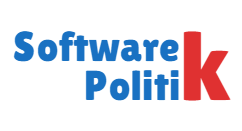Software plays a crucial role in the efficiency and effectiveness of public administrations, directly impacting the services citizens receive and the internal workings of governments. However, in many countries, the value of software and technology management in the public sector does not receive adequate attention, leading to issues that affect both the quality of public services and fiscal spending. In this article, we explore how software is managed within public administrations and examine the issues that arise from current practices, with a focus on countries like Spain.
Underutilization of developers in the public sector
In public administrations, the hiring structure for technology specialists is heavily weighted toward systems or network profiles, while software developers receive minimal attention. This has led to a growing reliance on outsourcing to private companies for developing applications and digital solutions needed by the administration. Through contracting processes, these companies are tasked with creating software tailored to each department or service’s needs. However, this practice reflects a lack of commitment to internal digital development and a failure to recognize the strategic potential of software in optimizing public processes.
This approach raises several questions: Is it sustainable for the development of key software for public services to be handled externally? How much control does the administration retain over the technical standards and quality of these developments? These questions are essential, as without in-house development teams, the administration lacks the ability to oversee and manage development processes and standards deeply, resulting in a lack of uniform criteria.
Inequality in quality standards and project management
One major consequence of outsourcing is the lack of clear standards and criteria. In each new software development project, specifications and requirements are typically determined by the departments or services requesting the software, rather than by a centralized technical analysis team to ensure consistency and quality. This results in a wide variety of applications within public administration systems, each developed with different technologies, criteria, and approaches. This internal system fragmentation not only means that each software application is unique, but also that maintaining and updating these applications becomes costly and complex.
In software engineering, this phenomenon is known as a “big ball of mud,” describing systems that, due to poor initial design, are difficult to maintain, scale, and modify. Applications lacking a clear, well-defined architecture increase maintenance costs over time and create prolonged dependence on the developing company. Moreover, this lack of standardization leads to low interoperability between the various applications within the administration, reducing process efficiency.
Misalignment between administration and subcontracted companies
The relationship between public administrations and subcontracted companies for software development is often marked by insufficient communication and lack of effective coordination. In many cases, the companies that win the contracts focus on meeting the specific requirements in the contract, without a clear vision of the department’s or service’s long-term needs. This dynamic creates a scenario where software development centers on meeting deadlines and contract terms rather than addressing the practical and functional needs of public employees who will use it. The absence of ongoing dialogue and a deep understanding of internal processes results in a product that may not be well-suited or adaptable for specific tasks within each department.
This contract-driven approach results in applications that frequently lack the flexibility and adaptability for future modifications or improvements, reducing their lifespan and reinforcing a dependence on the developer for any adjustments. Instead of focusing on building robust and efficient products, many subcontracted companies adopt a “reactive maintenance” attitude, addressing only daily issues without a long-term improvement strategy. This perpetuates a cycle of dependence in which the company aims to secure the contract year after year, ensuring recurring revenue without optimizing internal processes or improving the end-user experience. Without effective oversight and the presence of an internal analyst to guarantee technical coherence in projects, administrations are often left accepting products that fail to meet the intended objectives, resulting in prolonged cycles of dependence and rising costs without adding real value to public services.
High expenditure on proprietary software licenses
Another significant factor is the substantial expenditure on proprietary software licenses. Despite the availability of free software alternatives, public administrations remain major purchasers of licensed products from companies like Microsoft, Oracle, and other large software corporations. This includes not only office suites but also databases, management systems, and multiple development libraries. The money invested in these licenses is substantial and could often be reduced by considering a more balanced evaluation between paid and open-source options.
For instance, open-source office suites like LibreOffice or databases like PostgreSQL could represent a significant saving for public finances. However, public employees often lack sufficient training in these alternatives, resulting in low effectiveness when implemented. Furthermore, this spending on licenses occurs without any review of its true impact on the efficiency of public services. The general public is often unaware of these details, even though the funds spent on paid software could be allocated to other essential public services.
Lack of support for open-source software in public administrations
Despite the potential benefits of open-source software for public administrations, it has not become a priority in most government agencies. Although some institutions have conducted trials or made selective implementations with open-source software, a clear policy promoting these types of technological solutions remains absent. Open-source adoption could significantly reduce costs and provide flexibility, but without a concrete strategy, its use remains limited and largely untapped.
An initiative to support open-source software through public funds and dedicated teams for its maintenance and development would help reduce dependence on paid licenses and create a more sustainable and collaborative development ecosystem within the public sector. With strong support, open-source software could not only meet many of the administration’s technological needs but also foster innovation and reduce long-term costs. However, this approach has yet to be prioritized, delaying its integration into public digital services and limiting potential savings for the state.
Toward strategic and efficient public software management
The way public administrations manage software reveals a lack of strategic vision and technical standards in managing technological resources. The reliance on contracting, the absence of standardization, and the high investment in proprietary software licenses are issues that impact both the quality of public services and fiscal spending. The solution does not necessarily lie in increasing the number of developers within the public sector but in establishing clear policies and criteria for contracting and software use, promoting greater savings and efficiency.
One crucial measure to address this issue could be the inclusion of an in-house systems analyst in each public administration department. This role, with a long-term strategic vision, could standardize criteria, streamline applications, and ensure that software development responds to real needs rather than temporary contractual requirements. By having a professional who understands internal processes and maintains direct contact with end-users, technical coherence would improve, and the creation of fragmented, hard-to-maintain systems would be minimized.
Moreover, shifting toward greater transparency and commitment to open-source software could result in cost savings and facilitate the integration of digital services for citizens. Implementing these strategies would allow for a more intelligent and sustainable use of software in public administration, modernizing the sector and ultimately enhancing citizen services.




